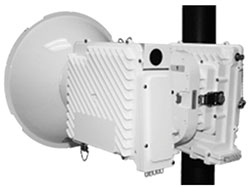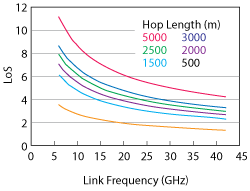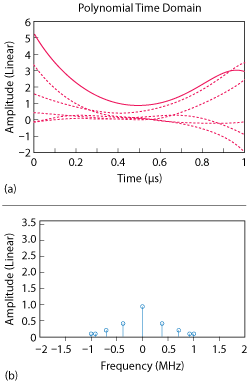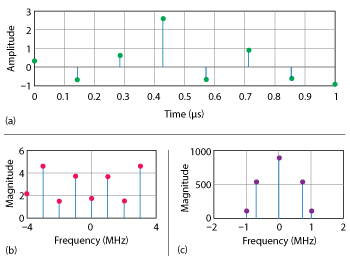We inhabit a world replete with ubiquitous wireless communications. People expect to have access to wireless broadband services at any place and at any time, at least in the more affluent parts of the world, while the rest of the world is catching up swiftly. A growing demand for higher speed data while on the move is fueled by addictive, bandwidth-hungry video services and improvements in video resolution like HD and 4K video. On top of that, technology improvements, cost reductions, ever expanding applications and new “must have” devices to fulfill the latent and emerging needs of humanity may help to establish augmented reality (AR) and virtual reality (VR) in the consumer market, increasing data consumption to unprecedented levels.
With the emergence of affordable flat-rate mobile data plans, at a price point comparable to fixed flat-rate plans, part of the fixed access traffic will move into the mobile access domain, greatly boosting mobile data demand. Then, streaming 4K video across a mobile network from a fixed location will not look like an oddity or a mere marketing gimmick.
QUENCHING THE THIRST
So, how will the wireless industry quench the apparently never-ending thirst for higher speed data? Focusing on a single radio link, rather than on a wireless access or transport network as a whole, traditional tools in the telecommunications engineer’s toolbox are well known and consist of:
Adding spectrum—Doubling spectrum, all other factors remaining the same, doubles capacity. This is the most straightforward way to double throughput in any wireless link. It is the telecom engineer’s equivalent to the automotive engineer’s “there’s no substitute for cubic inches” design principle. There is no substitute for bandwidth, but spectrum is limited, and good spectrum is expensive and congested, which often eliminates this option.
Increasing spectral efficiency—This is the telecom engineer’s equivalent to the automotive engineer’s forced induction toolkit, i.e., turbocharging or supercharging an engine for higher output and/or efficiency per cubic inch. Spectral efficiency can be increased in several well known ways:
- Higher-order modulation is equivalent to adding characters to the alphabet, thereby encoding more information (bits) per transmitted symbol and increasing the data rate.
- Polarization diversity uses the same communication channel in two orthogonal directions (polarizations) and applies dual-polarization interference cancellation to double spectral efficiency and throughput. This technology is usually denoted as cross polarization interference cancellation (XPIC).
- Spatial multiplexing uses N, where N ≥ 2, transmitting/receiving antennas inside a single channel and polarization for transporting N distinct data streams, exploiting spatial diversity in a signal propagation path to distinguish between the N data streams. This scheme allows for a boost in spectrum efficiency of up to N times under ideal circumstances, and is commonly denoted as multiple input multiple output (MIMO).
- Data compression is the lossless compression of user payload data that enables a data link to carry more. Compression gain typically ranges between 10 and 110 percent, depending on payload compressibility. In most use cases 30 to 50 percent is achievable.

Figure 1 One end of a typical 2+0 XPIC point-to-point microwave radio link with traditional single-carrier transceivers that provides 1 Gbps data rates.
EXAMPLE APPLICATION
What can these tools deliver in terms of throughput? Let’s apply them to a typical fielded point-to-point microwave radio link (a so-called 1+0 link), assuming a single 56 MHz channel, one polarization, 256-QAM modulation and no payload compression. The baseline capacity of this link is 363 Mbps. With the spectral efficiency tools applied sequentially, we can increase capacity in the following ways:
- Increasing the modulation to 2048-QAM yields 500 Mbps, a 38 percent increase, at the expense of approximately 9 dB of link budget. This means maintaining the same link performance (e.g., range, availability and antenna sizes), we must increase the system hardware gain by 9 dB, typically by increasing power and power consumption. Alternatively, the same performance can be provided at the baseline capacity of 363 Mbps while using adaptive modulation to provide 500 Mbps for a smaller portion of time.
- Expanding the link to a 2+0 XPIC link (see Figure 1) achieves 1 Gbps, greater than a 100 percent increase, by roughly doubling the hardware expense—although some new systems do this more efficiently by providing XPIC in a single unit. Using XPIC may also increase spectrum fees, typically 50 percent, although the increase can be as high as 100 percent.
- Expanding the link to a 2+2 XPIC+MIMO link, which has a capacity of 2 Gbps (another doubling) at the expense of precisely doubling the hardware expense and doubling the number of antennas and, hence, the site lease cost. Line-of-sight MIMO (LoS MIMO) is challenging to implement with point-to-point microwave links because the antenna spacing required can easily exceed 10 m, requiring very specific and scarce tower or rooftop locations.
- Enabling data compression yields 2.6 Gbps. Data compression is one of the most affordable ways to increase spectrum efficiency, as it requires no additional or improved hardware and does not incur recurring spectrum or tower lease fees. The limitations are that the gain depends on the compressibility of the user’s payload; encrypted payloads do not compress well.
By simultaneously applying all of the spectral efficiency tools available in the toolbox, at least in theory, we can increase the baseline capacity of an average 1+0 point-to-point microwave radio link using a 56 MHz channel more than 7x to greater than 2.6 Gbps. The spectrum efficiency would be an impressive 46 bps/Hz, half of that per polarization. However, this approach would:
- Increase the hardware cost as much as 4x. With optimized dual-carrier hardware, the cost of a 2+2 XPIC-MIMO configuration would be about 2.7x that of a 1+0 single-carrier baseline.
- Increase spectrum fees by 50 to 100 percent.
- Double the tower lease cost.
- Require up to 9 dB higher system gain for the same link availability target at the higher data rate, implying higher hardware costs and power consumption.
- Require payload compression prior to encryption to reap the full benefits of payload compression gain.

Figure 2 Optimal LoS MIMO antenna spacing vs. frequency and hop length.
It is unlikely that LoS MIMO can be applied in the majority of real world deployments, because of the unwieldy optimum antenna spacing requirement, as shown in Figure 2. The optimal antenna spacing that delivers ~100 percent efficiency is impractical or even prohibitive for lower to medium frequency bands, i.e., below 15 to 28 GHz, and medium-range and long hops (2 km and greater). Hence, the maximum throughput achievable on our sample link would be 1.3 Gbps (rather than 2.6 Gbps), which still represents a significant 3.6x improvement in throughput and spectral efficiency. This level of improvement implies:
- Increased hardware cost, as much as 2x. With optimized dual-carrier hardware, the cost of a 2+0 XPIC configuration would be about 1.35x the baseline cost.
- Increased spectrum fees of 50 to 100 percent.
- 9 dB higher system gain to achieve the same link availability target at the higher data rate.
- Payload compression prior to encryption.
THE NEXT FRONTIER
With the tools described in the previous section, representing existing and proven technologies, rather impressive spectral efficiencies in the range of 23 to 46 bps/Hz (50 percent of that per polarization) are possible. If required, as much as 2.6 Gbps through a 56 MHz channel can be achieved. This is equivalent to transmitting an entire 4.7 GB DVD in just 14.8 seconds!
But can we increase spectral efficiency beyond this? Not so long ago, I would probably have said “not by much under real-life circumstances.” It appeared that we had all but exhausted our options.
Surely, modulation can be, and has been, increased beyond 2048-QAM. However, the relative spectral efficiency gain is modest (less than 9 percent per step and decreasing), and the loss of radio frequency performance is significant. To double spectral efficiency through modulation alone, taking 2048-QAM as a baseline, would require developing 262,144-QAM and compensating for a significant 21 dB loss of system gain. That is prohibitive.
XPIC simply does not scale beyond two carriers, as there are only two spatially orthogonal polarizations available. Two by two LoS MIMO is already hard to deploy, and scaling up to higher-order LoS MIMO for point-to-point microwave links in a single polarization is even less attractive. Four by four LoS MIMO typically relies on 2 x 2 LoS MIMO in two polarizations, so it is not “true” 4 x 4 MIMO, rather 2 x (2 x 2 LoS MIMO) operating in XPIC mode. It is a combination of LoS MIMO and XPIC.
Fortunately, there are other, more promising approaches on the horizon: full duplex radio and spiral modulation. Both approaches promise a significant improvement in spectral efficiency: full duplex radio by 87 to 100 percent and spiral modulation, potentially, by more than 400 percent.

Figure 3 ISA example decomposing a random Taylor polynomial of degree 15 (a) into sinusoids with continuously-varying amplitudes, shown at an arbitrary time of 0.2 µs (b). Used with permission of Astrapi Corp.4
FULL DUPLEX RADIO
Full duplex radio is simply simultaneous transmission and reception in a single channel. Despite its conceptual elegance, nearly all of today’s full duplex transceiver systems use either frequency division duplex (FDD) or time division duplex (TDD), rather than full duplex radio, for separating strong outgoing from weak inbound signals. With FDD, the system transmits and receives simultaneously but on different frequency channels (separated by the duplex spacing), using comparatively simple and inexpensive devices like bandpass filters to suppress the transmitted signal at the local receiver. With TDD, the system’s transmission and reception do not occur simultaneously, rather at pre-defined consecutive time intervals (bursts) and are hence separated in the time domain rather than the frequency domain. With a rapid switching (time slicing) between the transmitting and receiving mode, traffic flow appears to be continuous. FDD and TDD provide comparatively simple and inexpensive means for separating the strong, locally transmitted signal from the much weaker received signal, which is why they are popular.
The significant technical challenge to implementing full duplex radio is the reduction of self-interference by the transmitter. A large amount of transmitter-to-receiver signal suppression is needed in a typical high-performance wireless communication system—typically > 110 dB, assuming a −90 dBm receiver noise floor and +20 dBm of transmitter power, so that self-interference does not adversely impact system performance. This is more challenging since the transmitter analog signal is distorted nonlinearly, consisting of the desired transmitted signal, its harmonics and (random) transmitter noise.
Until recently, no one had been able to accomplish this feat. However, a team from Stanford University1 has built a prototype that achieved a median spectrum efficiency gain of 87 percent in a Wi-Fi-based proof of concept, using a standard 802.11ac full duplex radio and a clever combination of analog and digital self-interference cancellation techniques. This represents a technical breakthrough. Although several challenges remain, such as miniaturization of the prototype hardware, extension of the concept to MIMO systems with the added complexity, cost reduction and possible regulatory challenges in FDD spectrum, full duplex radio will most likely become a new and valuable tool in the spectral efficiency toolbox. The technology is being commercialized by Kumu Networks.2
SPIRAL MODULATION
Spiral modulation is a term coined by its inventors at Astrapi Corp.3 The concept is based on new mathematics and leads to a potential breakthrough in spectral efficiency by exploiting the properties of a continuously-varying spectrum. Due to its mathematical foundations, the spiral modulation concept is more difficult to comprehend and explain than the intuitive concept of full duplex radio. Unlike full duplex radio, there is no working transceiver prototype implementing spiral modulation—yet. This is work in progress. Spiral modulation is a more fundamental innovation, a paradigm shift, as it holds the promise of much greater spectral efficiency gain, on the order of more than 400 percent. A full duplex radio, on the other hand, is inherently maxed-out at 100 percent spectral efficiency improvement.

Figure 4 ISA applied to a time amplitude sequence (a), comparing the stationary FT (b) and t0 ISA (c) spectrums. In this example, the ISA range of frequencies with nonzero amplitude is 25 percent of the range from the FT representation. Used with permission of Henry Rodrigues, Inatel.5
The foundational mathematics for current telecommunications is Euler’s formula. This generates sinusoids with constant amplitude, which are the bases for symbol waveforms in digital communication. The Fourier transform (FT), used for spectral analysis, is also derived from Euler’s formula. Effectively, the FT averages spectral information over a time interval. Astrapi introduced a generalization of Euler’s formula that describes spirals in the complex plane. This mathematics leads to a disciplined and precise method for describing symbol waveforms generated from sinusoids with continuously-varying amplitude, i.e., “spiral modulation.” It also provides a technique called instantaneous spectral analysis (ISA) for describing a time-varying or “non-stationary” spectrum at each moment in time, not averaged over an interval as with the FT (see Figure 3).
This conceptually simple generalization from circles to spirals has profound implications. The Shannon-Hartley law, which establishes an upper bound on spectral efficiency related to the available bandwidth and the signal-to-noise ratio (SNR), contains an implicit assumption that the spectrum is stationary, through the use of the FT, to prove the sampling theorem. In principle, the design of signals featuring a continuously non-stationary spectrum using the tools provided by spiral modulation opens the door to much higher spectral efficiencies than were previously thought possible—in theory limited by hardware rather than solely by available bandwidth and SNR (see Figure 4).
Astrapi’s research on spiral modulation, which has been funded by the U.S. National Science Foundation (NSF), is not at a stage where it is ready for commercialization. However, since spiral modulation is the only technology that can, in principle, offer indefinite improvements in spectral efficiency by exceeding the Shannon limit, it is worthy of consideration. Astrapi is developing spiral modulation collaboratively and is open to new partnerships with companies and research institutions willing to help shape the technology from its current stage.
CONCLUSION
Mobile data consumption is growing steadily, fueled by high-definition video applications, fixed-rate “all you can eat” data plans, fixed-mobile substitution and novel, emerging bandwidth-hungry applications. At the same time, the most useful available spectrum is inherently limited, as is the spectrum that can be used to backhaul data from cellular base stations where wireless backhaul is used. Maximizing spectral efficiency is, therefore, of paramount importance for the telecommunications community.
While consumption is growing, the steady increase of spectral efficiency in telecommunication systems has been tapering off. Two independent developments, full duplex radio and spiral modulation, may reverse the trend and enable the telecommunications industry to push the envelope way beyond what is considered to be the current state-of-the-art in spectral efficiency. Those two technologies, combined, may spur an 8x or higher increase in spectral efficiency, enabling spectacular growth in the traffic-carrying ability of wireless telecommunication systems. With this combination of technologies, it is conceivable to have a 10 Gbps or greater wireless link, even with today’s narrow spectrum allocations.
There are exciting years ahead of us!
References
- D. Bharadia, E. McMilin and S. Kattihttp, “Full Duplex Radios,” SIGCOMM’13, August 2013.
- www.kumunetworks.com.
- www.astrapi-corp.com/about/.
- Dr. J. Prothero, “Technical Introduction to Spiral Modulation,” Technical Report R-201-1, Astrapi Corp., February 2017, www.astrapi-corp.com/wp-content/uploads/2017/03/R-2017-1_Technical_Introduction_to_Spiral_Modulation.pdf.
- H. D. Rodrigues, “Instantaneous Spectral Analysis (ISA),” Inatel-Brasil, October 2016, www.astrapi-corp.com/wp-content/uploads/2017/02/ISA-Presentation-Henry-Rodrigues.pdf.
